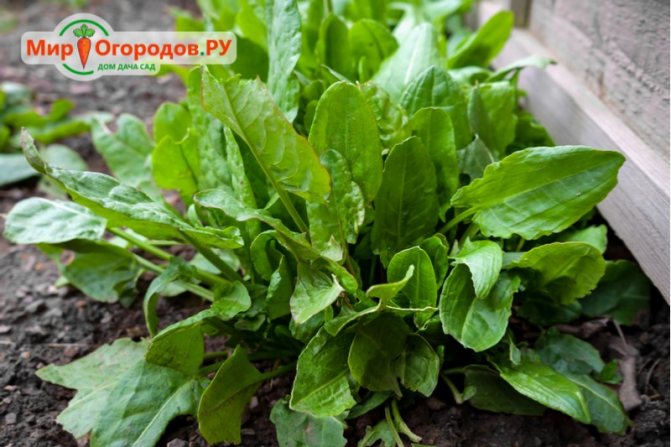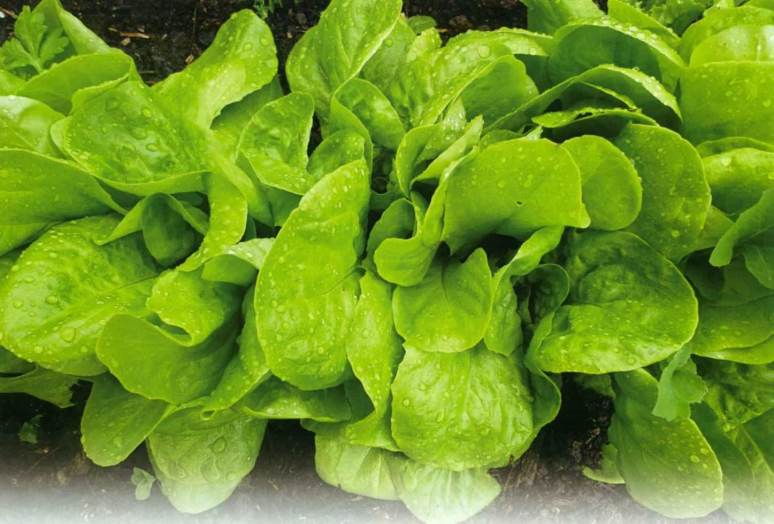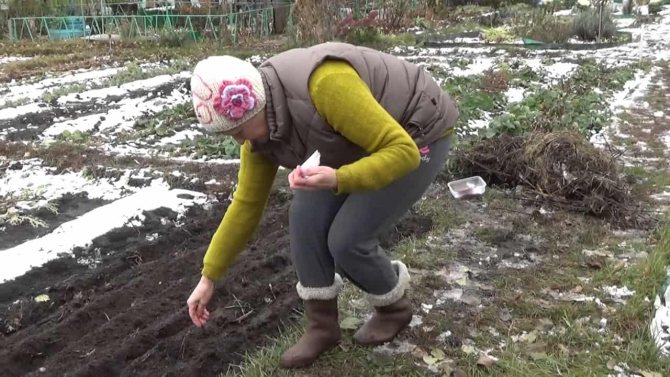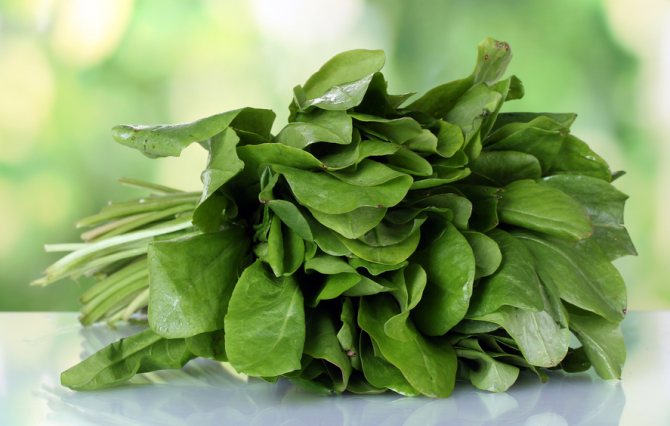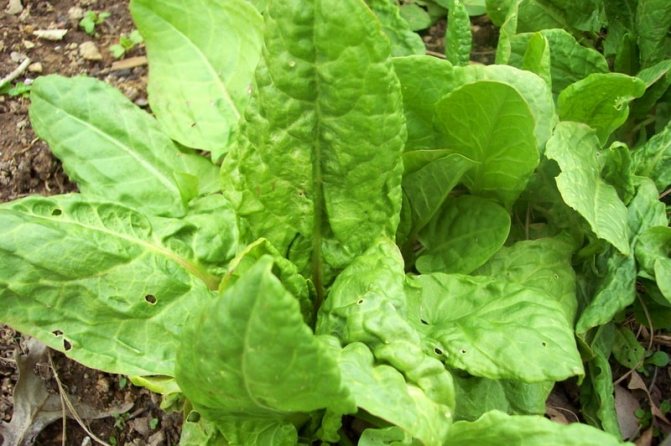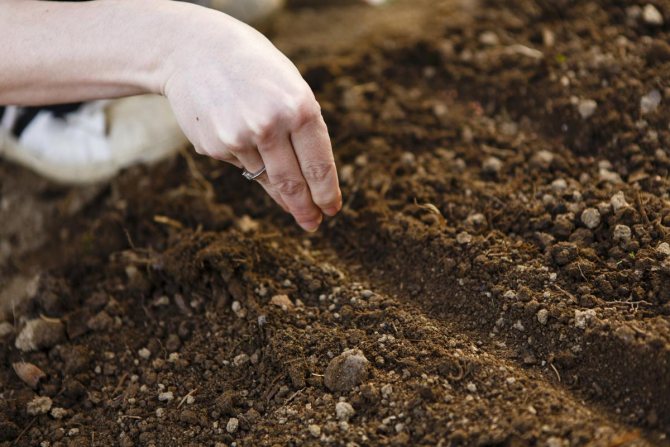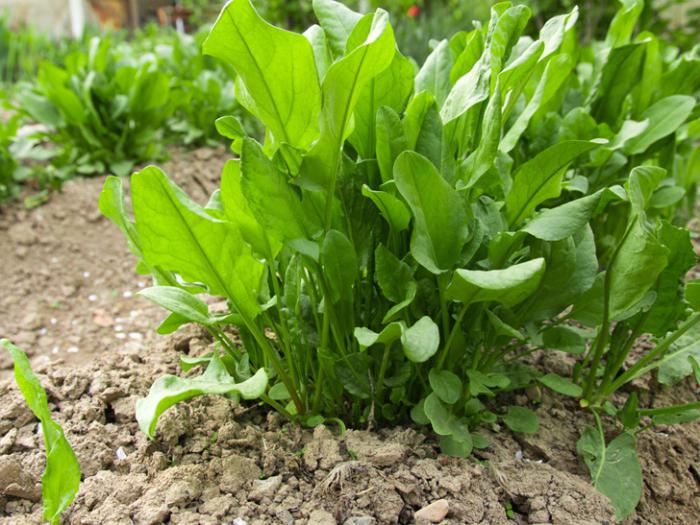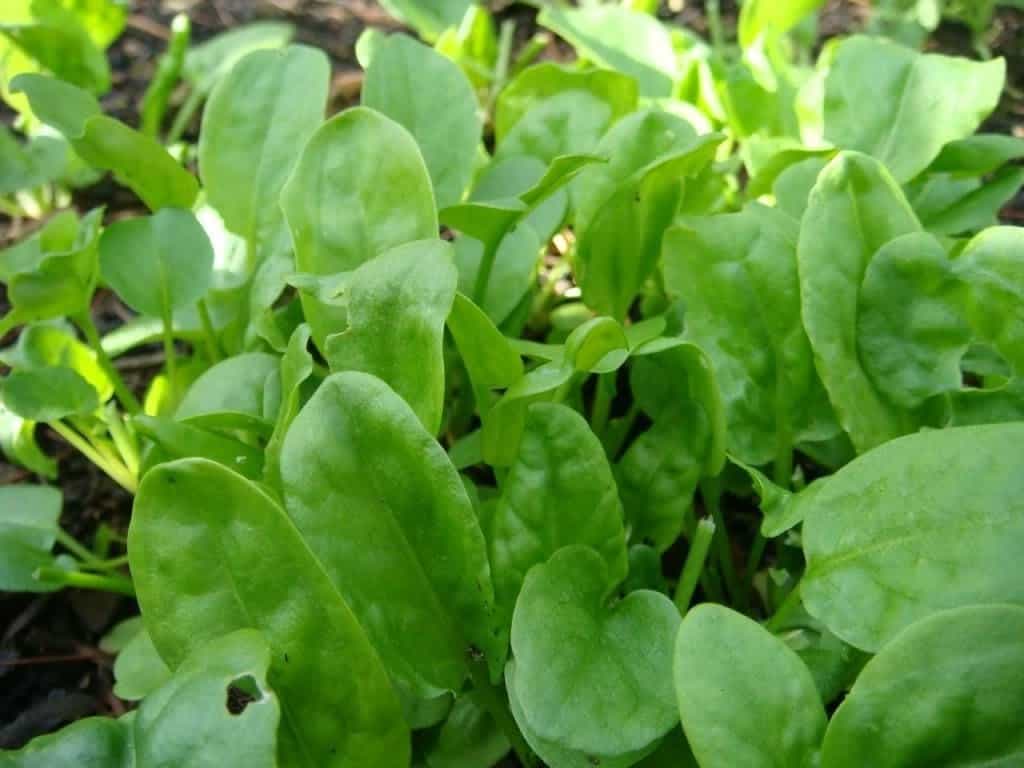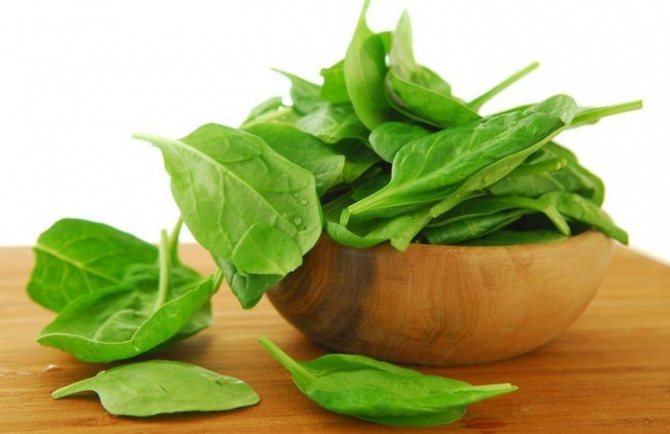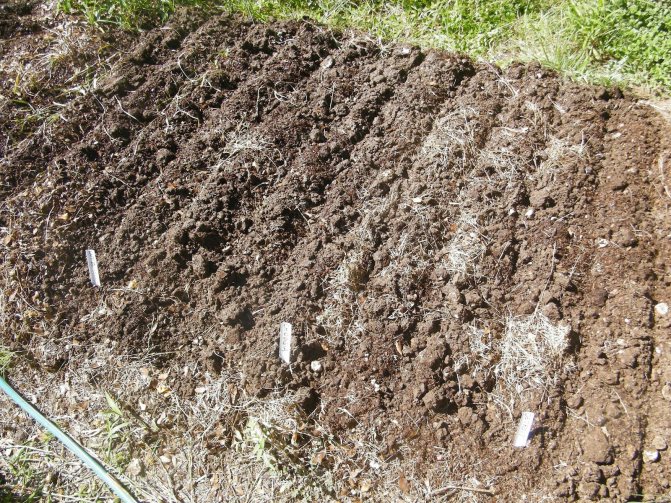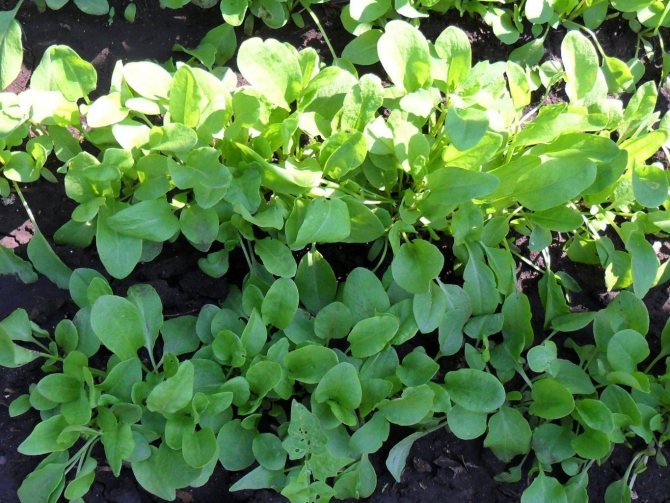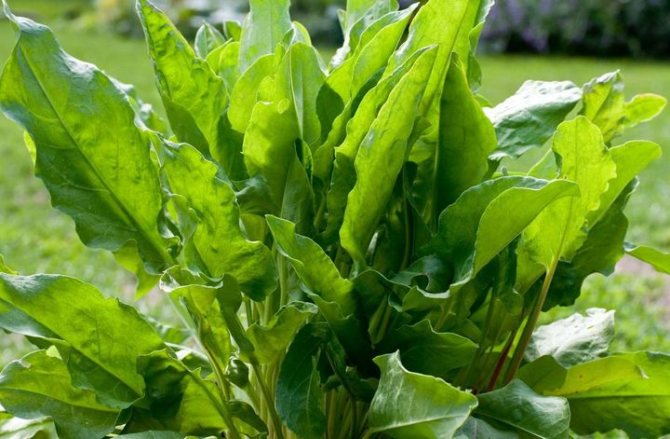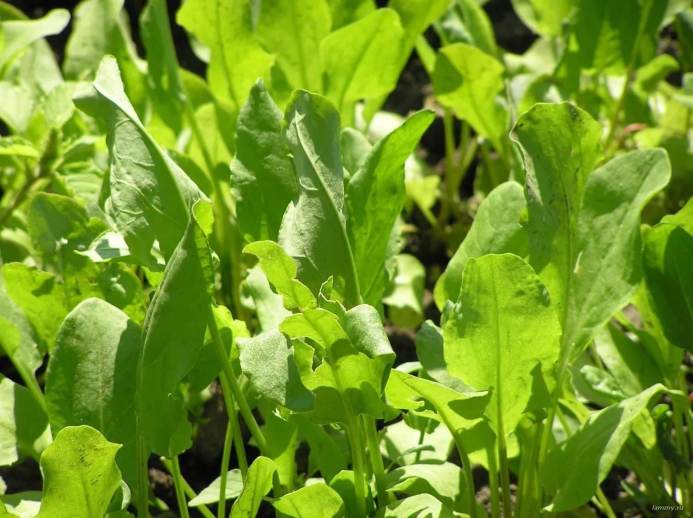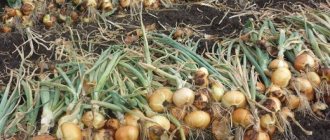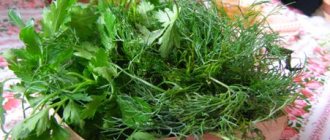It is recommended to plant sorrel before winter on sandy soil and a temperate climatic zone. In the southern regions, this vegetation can be grown both in spring and summer.
Planting Sorrel Seeds Sorry, there are currently no polls available.
It is not recommended to grow greens in one place for more than 4 years, this will lead to the degeneration of sorrel. It is optimal to move to a new place once every 2-3 years.
Benefits of winter sowing
Despite the fact that planting sorrel in the late autumn period is a rather rare technique in agricultural technology familiar to our compatriots, experienced gardeners prefer to plant some spicy and vegetable crops in the fall. This fit has a number of advantages, including:
- getting an earlier harvest of a useful green crop;
- seed material undergoes natural hardening or natural stratification during winter frosts;
- in the spring, sorrel seeds are able to receive a powerful charge of moisture, which contributes to the formation of friendly and strong shoots.
In addition to such undeniable advantages, significant savings in spring time can also be attributed to the advantages of under-winter sowing.
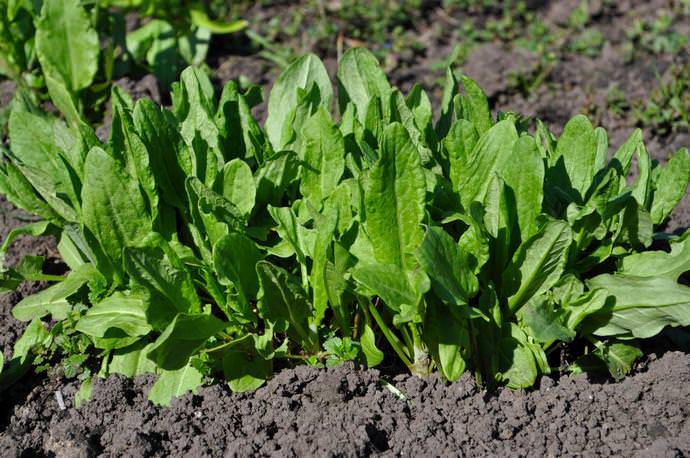
Parsley
Parsley is very popular among summer residents, giving in the first growing year a lush rosette of fragrant leaves, and the next year also fleshy odorous rhizomes.
In order for this culture to constantly flaunt in the garden, the last cut is carried out no later than September. Then annual plants are fed with phosphorus-potassium preparations, mulched with humus and left without any additional shelter for the winter.
Leaves are cut before the flower stalks begin to emerge. With the arrival of spring, the plantation is cleared of old leaves and continues to care for the plants as usual. For food use, the leaves are cut off before the peduncles begin to protrude, and then this is stopped if they plan to harvest the roots. Also, in order to get well-developed succulent rhizomes, all peduncles must be broken out at the very beginning of their development. Shoots with inflorescences are left on only some of the strongest plants to obtain seed.
Before the onset of a stable cold snap, parsley rhizomes are dug up and stored or harvested. Ripe seeds collected from the left peduncles are used for winter sowing in a new well-fertilized bed.
With proper autumn care, perennial vegetable crops will perfectly endure winter hardships, and in the spring they will actively start to grow and again give us a generous harvest. Which of these tasty and healthy plants do you have on your site? Please share with us which ones you find most in demand.
When to plant sorrel before winter
Sowing sorrel before winter should be starting in the second half of October or in the first decade of November. It is advisable to wait for the moment when the soil in the area for sub-winter sowing will be slightly stuck in frost, and the temperature indicators of the air will steadily drop to a mark of 0-5 ° C. If sorrel is planted too early, the sprouts that appear will be completely destroyed by the winter frosts.It should be noted that the standard consumption of seed material during winter sowing must be increased by about 25-30%.
Mr. Dachnik informs: how to get sorrel seeds
In order to get your seed, you need to give 2 bushes to bloom - this will happen around May. Then wait until the panicles darken and only then cut them off. Exfoliate, blow off debris and leave seeds.
Germination will last for 3-4 years. But do not collect seeds from sorrel, the name of which is accompanied by the F1 mark, this is a hybrid variety and it does not produce offspring.
Do you know that in order to take everything from life and at one time, you need to eat sorrel. The fact is that the "spring king" contains such a rich "live" vitamin and mineral complex that it fully copes with vitamin deficiency, reduces the risk of developing cancer, liver diseases, and is effective in treating rheumatism and tuberculosis, as well as menopause. A small nuance that needs to be warned about - you can eat only the upper young leaves from it and until July. The “meadow apple” has gained special sympathy among summer residents due to the fact that it can be sown almost all year round. In addition, it is interesting that for "wild beets" (another Old Russian name for sorrel), planting in acidic soil is more natural and productive. How to properly plant sorrel seeds in spring and autumn before winter, we will tell you in our article.
Landing site preparation
A perennial crop such as sorrel requires a careful approach to sowing and competent preparation of the soil on the site for cultivation. In order to properly plant sorrel in the autumn, it is advisable to carry out the following site preparation:
- preference should be given to light soils;
- sorrel grows and develops best on sandy loam or loamy soils, as well as in areas represented by peat soils;
- on other types of soils, it is recommended to provide crops with good drainage;
- it is necessary to carry out a deep digging of the soil in advance with careful removal of weeds;
- during pre-sowing digging, it is required to add about 5-7 kg of manure or compost, no more than 30-35 g of superphosphate, as well as about 20-25 g of potassium chloride.
The sorrel should be provided with adequate lighting or partial shade cultivation. Beetroot, radish, parsley, carrot, celery or cabbage can be used as precursor plants.
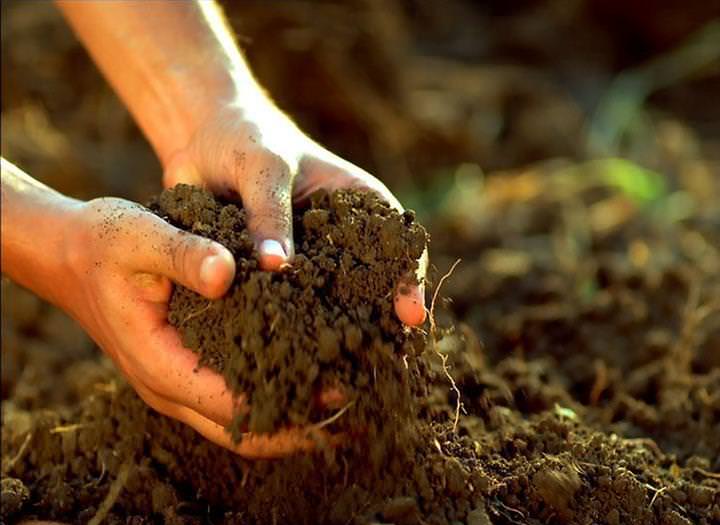

Presowing seed treatment
It should be noted that not all sorrel varieties show sufficient germination and high results when sowing in winter. It is recommended to give preference to the following varieties of this popular garden crop in our country:
- "Large-leaved";
- "Broadleaf";
- "Altaic";
- "Odessa";
- Belvian;
- "Maikop".
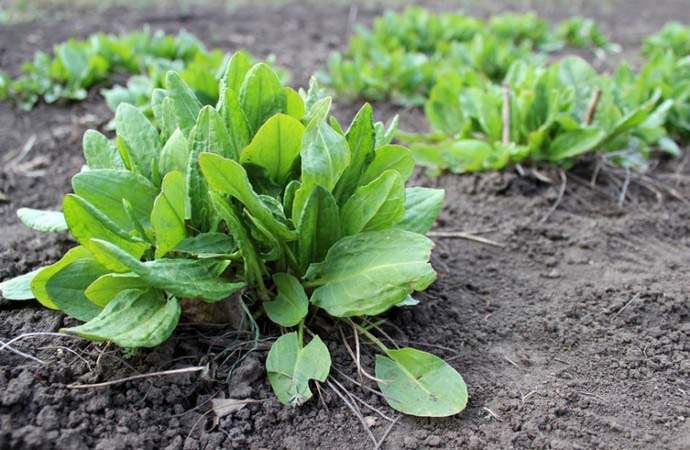

Moreover, The following relatively new varieties have proven themselves very well:
- "Vegetarian", an early maturing variety of universal use with a yield of 7-9 kg / m2;
- "Green Fairy Tale", medium early variety for universal use with a yield of 6 kg / m2;
- "Winter stock", a mid-season variety with fine bubbly leaves and a yield of 8 kg / m2;
- "Large-leaved", early maturing variety with fine bubbly light green leaves and a yield of 6 kg / m2;
- "Abundant", medium early variety suitable for canning with a yield of 6 kg / m2;
- "Champion", medium early variety suitable for canning with a yield of up to 8 kg / m2;
- "Shchi-borscht", an early variety with a slightly acidic taste and a yield of 6-7 kg / m2.
It is important to remember that sorrel seeds during winter sowing must be absolutely dry, which will not allow them to germinate until winter frosts.Late autumn crops are very convenient for home gardening, so they should not be neglected, and the main condition for success is the correct choice of the variety and adherence to the sowing rules.
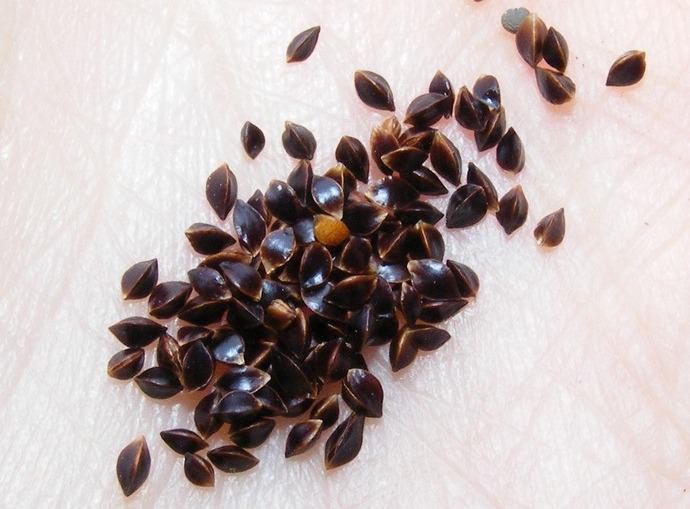

Varieties
Only experienced gardeners know that sorrel can be of different varieties. Most of them are common weeds, but there are also those species that are of considerable benefit.
- Large-leaved. This variety is the earliest. It tolerates low temperatures well and is frost resistant. Its leaves are light green, very beautiful in color.
- Belgian. Sorrel easily tolerates frost. The leaves do not have a pronounced taste, although it is very pleasant and very slightly sour. The size of the leaves is small - up to 15 centimeters in length.
- Malachite. It matures long enough. To harvest, you need to wait about 50 days. The leaves are slightly sweet and slightly sour.
- Spinach. This sorrel has very wide leaves that contain incredible amounts of vitamin C.
Sowing rules
Sorrel grows very well and forms fairly high yields when cultivated on slightly acidic soils with a pH of 5.2-5.5, and there is absolutely no need to carry out preliminary liming. Among other things, it is not recommended to grow such a garden crop as sorrel in one place for more than four years in a row, which is due to a rather noticeable decrease in the green mass, as well as the useful qualities of the harvested products.
The technology of podzimny sowing of this garden crop does not differ from planting in early spring, and consists in observing the following rules:
- when forming ridges, it should be borne in mind that the standard depth of the furrows should be about 3-4 cm;
- the standard distance between furrows should be approximately 20-25 cm;
- in the prepared furrows it is required to fill in a thin layer of dry sand, on which dry seed is laid;
- the crops sprinkled with soil must be thoroughly mulched with dry fallen leaves or other organic material suitable for these purposes;
- after the first layer of snow falls, it is advisable to shovel the snow mass onto the surface of the ridges with sorrel.
Collection
You know all about planting and caring for sorrel. Now it is worth learning about how to harvest the crop correctly, because it depends on whether it will grow next year. Plus, given some rules, you can get incredibly tasty greens.
- It is best to cut the leaves in the early morning or, conversely, in the late evening. This approach will allow you to get the most juicy and tasty sorrel.
- Harvest from the very edges. The leaves are cut with a knife. You can do it with your hands.
- Do not pull the leaves under any circumstances - you will either simply tear off only the edge of the leaf, or you will rip the bush together with the roots from the ground. If the roots are damaged, the plant is unlikely to take root.
- Harvesting should be stopped about one month before the onset of the first frost. This is necessary so that the plant has time to get stronger before the cold weather.
If you want to get your own seeds for future crops, you should leave a couple of bushes without harvesting them. Then they will be able to bloom and give a small amount of seeds. Unlike those sold in the store, they will be of very high quality. Flowering will begin in mid-May, but you need to remove the seeds only in July, when the inflorescences are already brown.
So, growing sorrel is not a difficult and time-consuming procedure. Even with the wrong care, you can get a good harvest. If you pay a little attention to the greenery, the result will be amazing.
Tags: what, distance, plant, sorrel
About
«Previous post
Sorrel for the winter: a recipe (video)
Of course, sowing under the winter is classified as a rather risky activity, and the final result depends on how accurately the sowing technology is followed. However, if seedlings do not appear before the first ten days of May, it is recommended to immediately re-sow. The first cut during winter sowing can be carried out about three weeks after the soil has completely thawed in the spring, which allows you to get at least three to four harvests of vitamin greens per season.


